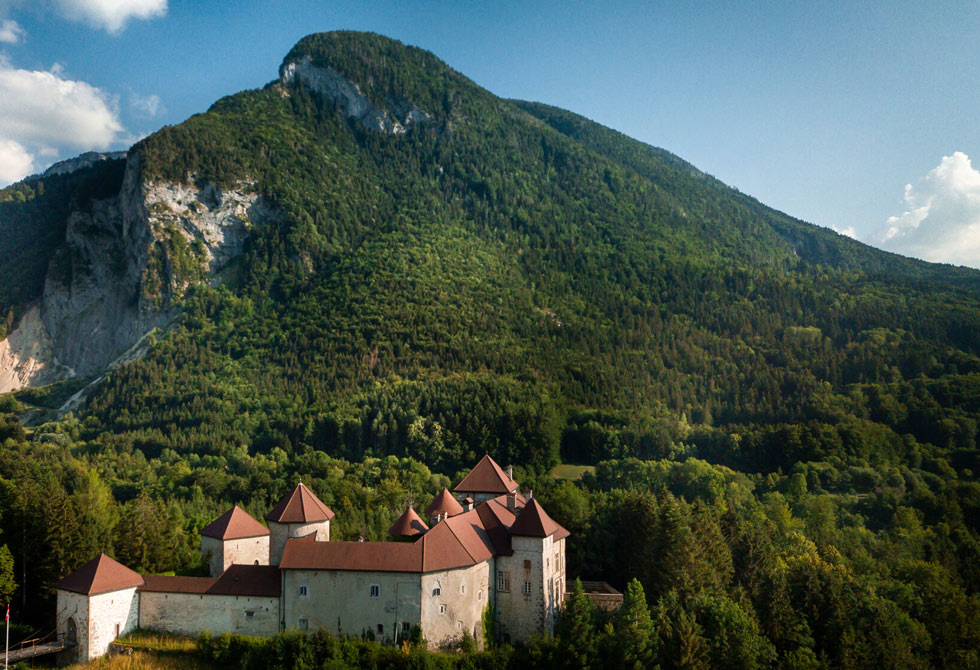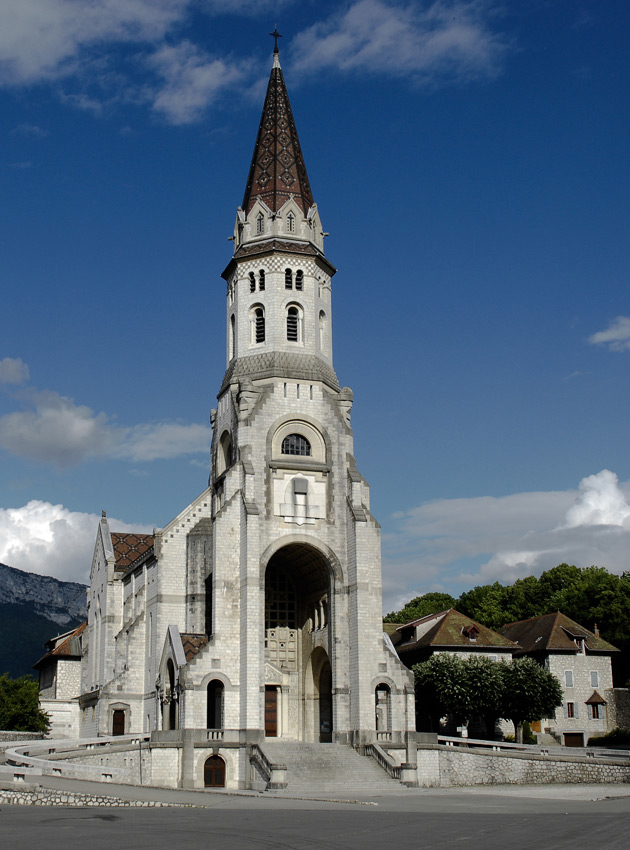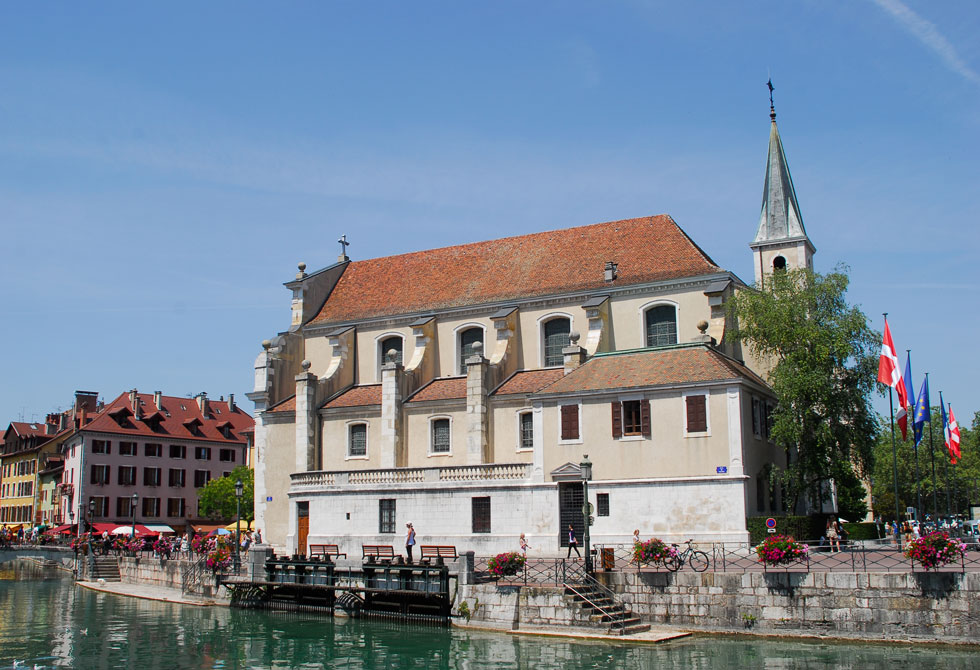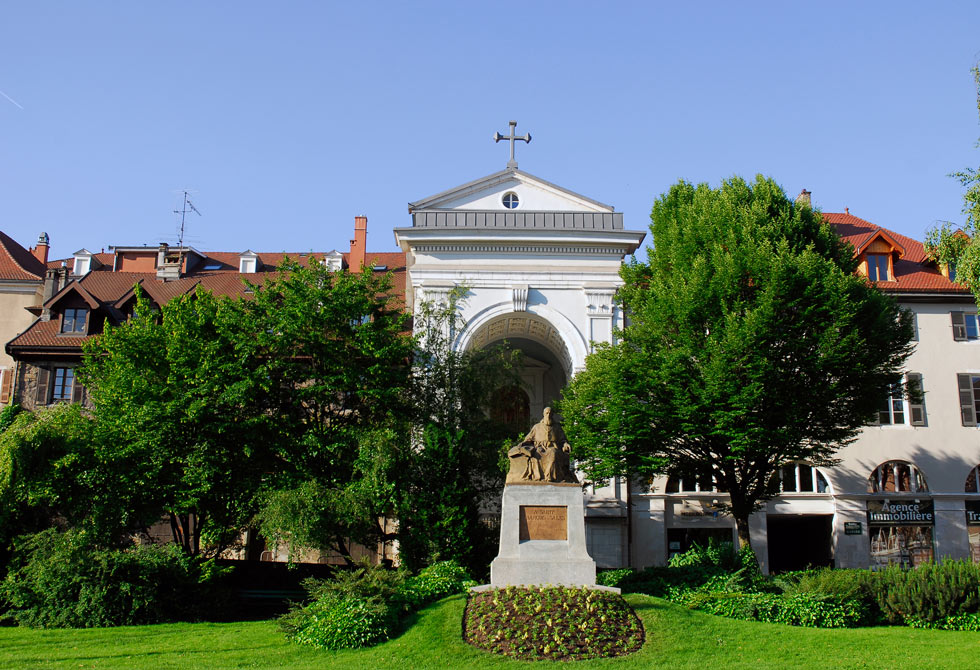
Once upon a time
Following in the footsteps of Saint François de Sales
Meandering through the streets of Annecy is a bit like following in the footsteps of Saint François de Sales. But who was he really? And why did he make such a big impact on the city?
As we prepare to celebrate the four-hundredth anniversary of his death in Lyon on December 28, 1622, the time has come to shine the spotlight on the man, his life, and his aura, which continues to leave its mark on many buildings and monuments around the city.
François de Sales (Francis de Sales) was born in 1567, at Château de Sales (castle), near Thorens-Glières – a duchy of Savoy at the time – into a wealthy aristocratic family. Religious wars marked the time period, hitting France hard between 1562 and 1598, which included targeted assassinations of Protestants, most notably the St. Bartholomew’s Day massacre in 1572. The Edict of Nantes, signed in 1598 by Henri IV, put an end to 36 years of bloody conflict between Catholics and Protestants.
We have to do everything for love, not out of force
After excelling as a student, studying philosophy, math, history, music, and theology, François de Sales de Sales decided to turn towards religion, and was ordained as a priest in 1593. The Bishop of Geneva bestowed upon him the mission of bringing the inhabitants of the Chablais, who recently converted to Protestantism, back into the Catholic fold. At the time Geneva was a major hotspot for the Protestant Reformation, and the former faithful had deserted their churches. Saint François de Sales began a long peaceful crusade using spiritual weapons such as prayer, charity, converting the heart, and leading by example. This prophet, who merged humanism and Christian philosophy, taught, preached, confessed, visited the poor and the sick, and lived in poverty, all the while helping those living in even more meager conditions than he. Saint François de Sales stood out from his contemporaries through his non-violent approach to Protestantism.

Sémaphore – P. Leroy / Castle of Thorens
“We must use charity to break down the walls of Geneva, we must use charity to invade the city, only through charity will we win Geneva back […] I am not offering you the chance to do battle with iron nor with that powder whose stench and taste evoke the furnaces of hell […]. We must repel the enemy on our own […], through example and the holiness of our lives […]. To knock down the walls of Geneva, we must pray and do battle through brotherly love and charity.”
Patron saint of journalists and writers
In 1593, to restore the Catholic religion, Saint François de Sales took the initiative to meet face-to-face with the inhabitants of the Chablais. He even worked with a printer to publish short treatises on the Catholic faith, posting the well written and presented leaflets on walls and sliding them under doors wherever he could. The many texts that he wrote, including “An Introduction to the Devout Life” (considered one of the first masterpieces of Christian literature), earned him the status as the patron saint of journalists and writers, and figures among one of the very first Catholic newspapers.

© C. Max / Basilica of the Visitation
Bishop of Geneva
In 1602, at the church in Thorens where he was baptized, Saint François de Sales was ordained the Bishop of Geneva, but lived in exile in Annecy, since Geneva remained Protestant at the time. He spent the twenty years of his episcopate teaching, preaching, traveling throughout his diocese, as well as reforming the clergy and the religious orders, all the while writing a prolific amount of letters and correspondences. “We should do everything through love, and nothing by force; we should love obedience more than we fear disobedience.”
When invited to the court of King Henry IV’s, the king assured him of his trust. In 1610, along with Baroness Jeanne de Chantal, Saint François de Sales founded the Order of the Visitation in Annecy. He died in Lyon, on December 28, 1622. He was then canonized in 1665 and proclaimed Doctor of the Church in 1877. He will always be considered a major figure in the rebirth of Catholicism at the beginning of the 17th century. His tomb is in Saint François Church, aka “the Italians,” located in Annecy’s Old Town.

© C. Max / Church Saint-François
Themed walk
To commemorate the four-hundredth anniversary of his death, a walk entitled, “In the Footsteps of Saint François de Sales,” created in partnership with the Annecy diocese, offers the opportunity to follow, from street to street, in the footsteps of François de Sales and to learn how, via his intellectual and religious capacity, he left such a long-lasting impact on the city.
The walk is wheelchair accessible, except for the staircase to the Basilica (take the road to go around it). Details for the walk are available on the ViAnnecy app.
Discover the walk (only in French)

© C. Max / Statue of Saint François de Sales
Copyright:
- © C. Max
Journalist: Aude Pollet-Thiollier
Translation: Darin Reisman
